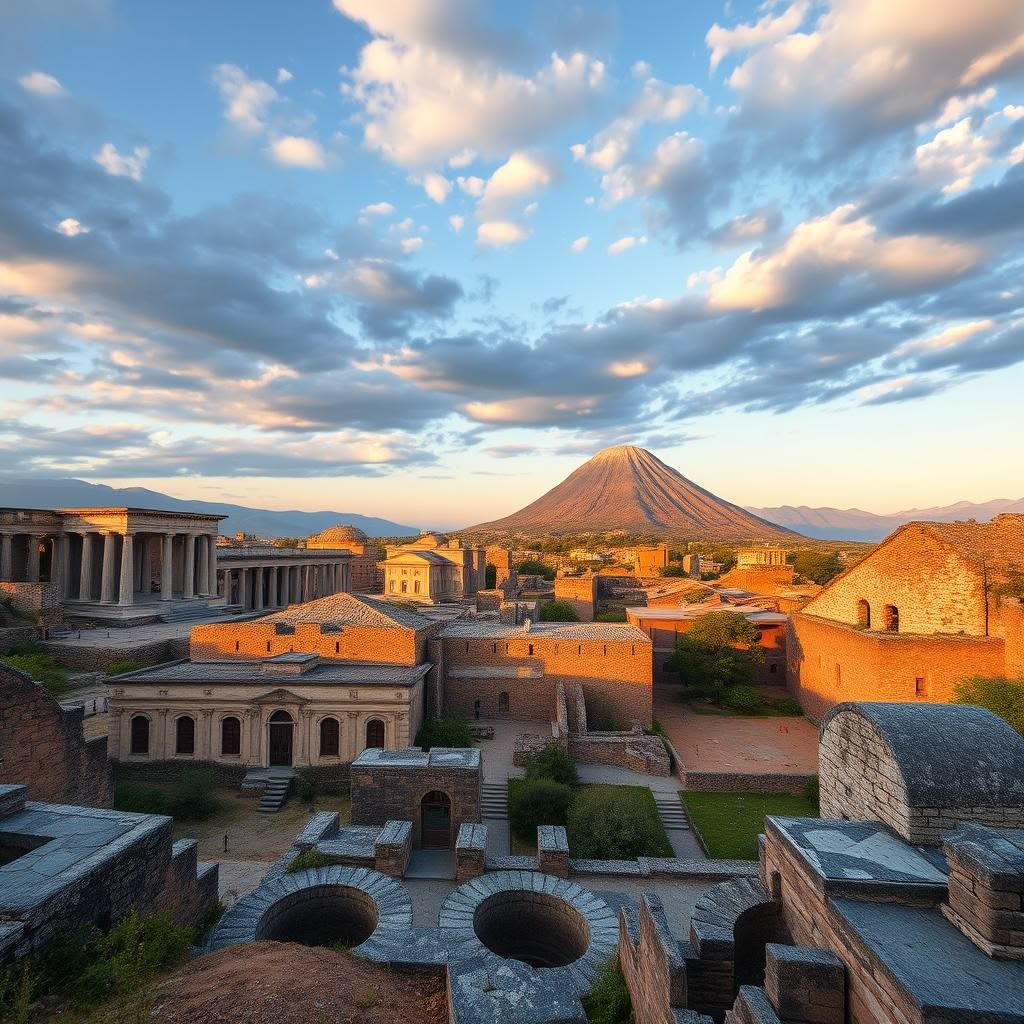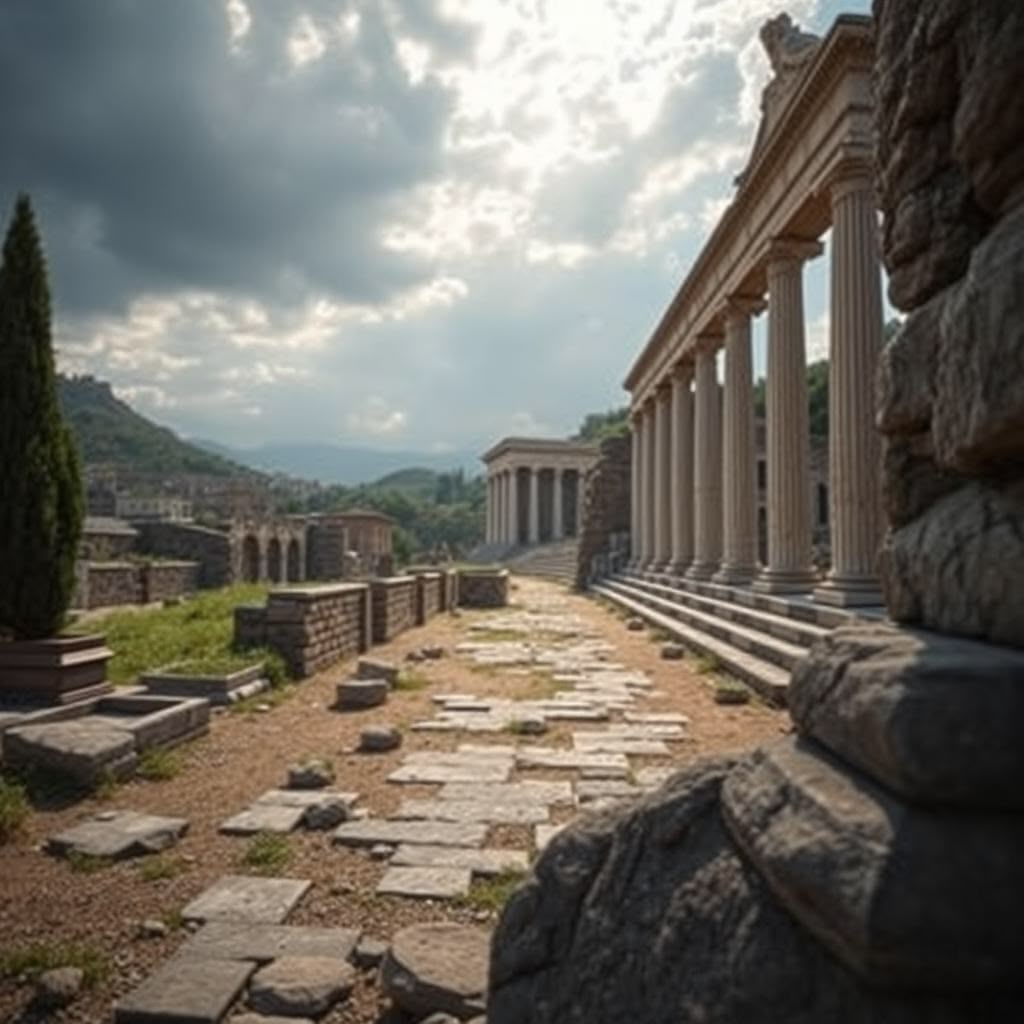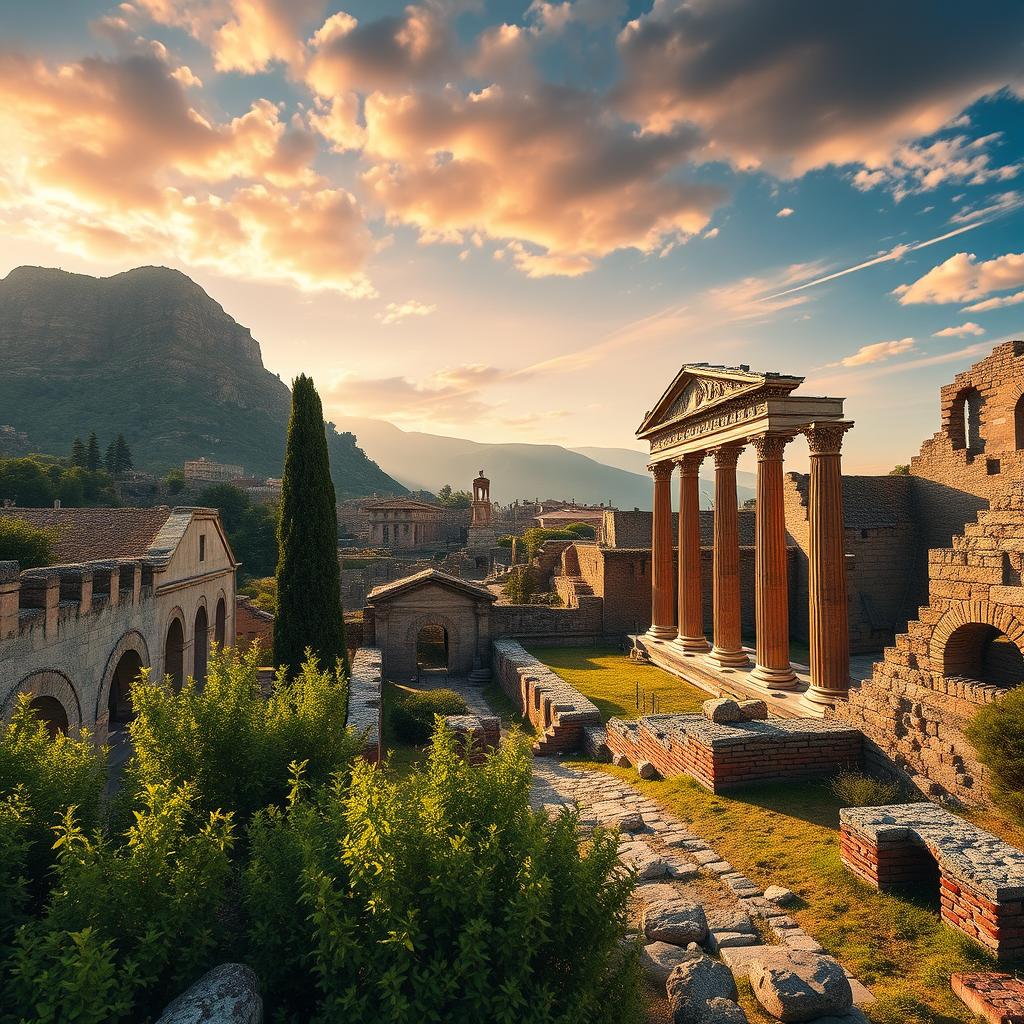The Writing on the Wall That No One Could Read—Until Now
The faded inscription lay hidden in plain sight for nearly two millennia. Archaeologists had walked past it hundreds of times, dismissing the barely visible markings as routine graffiti or perhaps just natural discoloration on the ancient plaster. But when Dr. Elena Rossi aimed her multi-spectral imaging camera at this unassuming wall in a modest Pompeii bakery last September, history literally came into focus before her eyes.
“I couldn’t believe what I was seeing,” Dr. Rossi recalls, her voice still carrying traces of that initial excitement. “It was an entire accounting ledger—bread production figures, distribution routes, pricing strategies—all meticulously documented. But what truly astonished us was the sophisticated tracking system they used for customer preferences. This wasn’t just a bakery; it was essentially running a data-driven business operation that we previously thought impossible without modern analytics.”
This discovery represents just one piece of an extraordinary new narrative emerging from the ancient streets of Pompeii. Thanks to groundbreaking archaeological technologies and methodologies, we’re witnessing nothing short of a complete reappraisal of what we thought we knew about the ancient Roman world. The civilization that emerges from this new evidence is more innovative, more technologically advanced, and more socially complex than historians have traditionally acknowledged.
And the implications extend far beyond academic curiosity. As these discoveries reveal increasingly sophisticated Roman solutions to universal human challenges—urban planning, resource management, social organization—they offer not just insights into our past, but potentially valuable perspectives on our present and future.
Peeling Back the Layers: How Modern Technology Reveals Ancient Truths
The traditional image of archaeology—patient researchers with brushes and trowels slowly uncovering artifacts—remains partially true. But today’s archaeological breakthroughs at Pompeii rely equally on technologies that would seem like sorcery to previous generations of historians.
Dr. Marco Pellegrini, director of the Pompeii Archaeological Research Institute, explains: “We’re essentially able to see through walls, beneath streets, and inside sealed spaces without moving a single stone. The non-invasive nature of these technologies means we can preserve while we discover—a revolutionary concept in archaeology.”
Among these technologies, ground-penetrating radar (GPR) has perhaps yielded the most substantial revelations. By sending electromagnetic pulses into the ground and analyzing their reflections, archaeologists can create detailed 3D maps of buried structures without excavation. In 2023, a comprehensive GPR survey of Pompeii’s northwestern quarter revealed something that challenged fundamental assumptions about Roman urban development.
“We discovered evidence of a complex underground water management system that predates the city’s famous aqueduct,” explains Dr. Sophia Chen, the geophysicist who led the survey. “This suggests the Romans were implementing sophisticated hydraulic engineering solutions decades earlier than we previously believed. More importantly, the design shows principles of water pressure management that weren’t ‘officially’ discovered until the Renaissance.”
Complementing these remote sensing technologies, advanced chemical analysis techniques have transformed our understanding of everyday Roman life. Mass spectrometry of residues found in cooking vessels has identified complex spice combinations that indicate trade connections extending far beyond documented Roman networks. Evidence now suggests direct or indirect trade links with the Indian subcontinent and possibly even China—challenging the conventional understanding of ancient globalization.
Perhaps most revolutionary has been the application of multi-spectral imaging—the technology that revealed the bakery ledger. By capturing data across multiple light wavelengths, including those invisible to the human eye, researchers can now read text and see imagery that has been invisible for centuries.

Rewriting History: The Pompeii That Never Was
As these technologies unlock Pompeii’s secrets, a fundamentally different picture of Roman society is emerging—one that contradicts many long-established historical narratives.
“We’ve traditionally viewed Roman technological innovation as primarily focused on monumental architecture, military applications, and luxury items for the elite,” explains Dr. Alessandra Vittori, classical historian at Rome University. “What we’re now seeing is a culture of everyday innovation—ordinary people developing practical solutions to common problems with remarkable ingenuity.”
One striking example emerged from a modest home in Pompeii’s artisan quarter. What archaeologists initially identified as a decorative wall feature has now been reinterpreted as an early prototype of a thermally efficient heating system. This system, which predates the well-known Roman hypocaust by several decades, used principles of thermal mass and air circulation that wouldn’t be “rediscovered” until the development of passive solar design in the 20th century.
“This wasn’t in some wealthy patrician’s villa,” emphasizes Dr. Vittori. “This was a craftsman’s home—someone of modest means who nonetheless developed a sophisticated engineering solution to a universal problem. It fundamentally challenges our notion that innovation was driven primarily by elite patrons.”
Social hierarchies are also being reassessed in light of new findings. Traditional historical accounts, heavily influenced by surviving literary sources written by upper-class Romans, painted a picture of rigid social stratification. However, DNA analysis of human remains, combined with household archaeological evidence, tells a more nuanced story.
“We’re finding evidence of significant social mobility and complexity,” notes Dr. James Peterson, biological anthropologist working with the Pompeii Bioarchaeology Project. “DNA samples from one household show individuals with ancestry from North Africa, the Eastern Mediterranean, and Northern Europe all living together—not as slaves and masters, as might be assumed, but apparently as family members. Their burial goods and household positions suggest relationships far more complex than our traditional understanding of Roman social structures would predict.”
Women’s roles, traditionally downplayed in historical accounts, are also being dramatically reassessed. Epigraphic evidence—inscriptions on buildings, artifacts, and public monuments—increasingly reveals women as business owners, property developers, and public benefactors.
“The documentary record always included some exceptional women who wielded economic and social power,” explains Dr. Rossi. “But what we’re seeing now suggests this wasn’t exceptional at all—it was commonplace. Women weren’t just maintaining households; they were running industries, financing construction projects, and shaping public life in ways we’ve systematically underestimated.”
The Digital Archeologists: How Computational Methods Are Revolutionizing Discovery
While advanced imaging and sensing technologies provide the raw data, equally revolutionary computational methods are helping researchers interpret this information in unprecedented ways.
Dr. Takashi Yamamoto, computational archaeologist at the Digital Antiquity Lab, has pioneered the application of machine learning algorithms to analyze patterns in Pompeii’s urban development. “By feeding our algorithms data on building techniques, street layouts, and architectural features, we can identify patterns that human researchers might miss,” he explains. “One of our most surprising findings is evidence of standardized construction methods that suggest a far more organized approach to urban development than previously recognized.”
This computational analysis has revealed what appears to be a modular building system—standardized components and measurements that would have allowed for more efficient construction. “It’s remarkably similar to modern prefabricated building techniques,” notes Dr. Yamamoto. “Components could be manufactured off-site and then assembled quickly—a practice we thought originated in the Industrial Revolution.”
Digital reconstruction techniques have also transformed how researchers understand ancient spaces. By combining archaeological data with principles of structural engineering and historical accounts, teams can create virtual models of buildings as they would have appeared and functioned.
“When we digitally reconstructed the bakery where we found the ledger, we realized something extraordinary,” says digital modeling specialist Dr. Elisa Moretti. “The layout of the work areas, the positioning of the ovens, and the flow of materials showed principles of efficiency that parallel modern industrial engineering. They had effectively created an ancient production line, optimizing workflow in ways we associate with much later periods.”
Perhaps most significant has been the application of network analysis—computational techniques that map relationships between people, places, and objects. By analyzing the distribution of similar artifacts, architectural features, and decorative styles throughout Pompeii, researchers can identify patterns of influence and connection.
“We’re seeing evidence of what we might today call ‘innovation clusters’—neighborhoods where particular techniques or designs emerged and then spread,” explains Dr. Carlos Mendez, who specializes in archaeological network analysis. “This suggests a culture of knowledge-sharing and collaborative problem-solving that contradicts the image of isolated craftsmen jealously guarding their techniques.”

Echoes Across Time: What Pompeii’s Innovations Tell Us About Ourselves
As our understanding of Pompeii evolves, researchers are increasingly struck by parallels between Roman solutions and contemporary challenges.
“Their water management systems addressed the same fundamental problems we face today—efficient distribution, conservation during scarcity, and handling excess during floods,” notes hydraulic engineer Dr. Sarah Johnson, who consults with the archaeological team. “Some of their solutions, particularly their use of passive systems that required no external energy input, offer principles we could learn from in developing sustainable modern infrastructure.”
Urban planners have taken particular interest in Pompeii’s neighborhood organization. Recent discoveries suggest intentional mixed-use development—combining residential, commercial, and light industrial spaces in ways that created vibrant, walkable communities. “They were solving problems of urban livability that we’re still struggling with,” observes urban studies professor Dr. Michael Chen. “Their integration of public and private spaces created neighborhoods that fostered both community interaction and economic activity.”
Perhaps most relevant to contemporary concerns are emerging insights into how Pompeii’s residents adapted to environmental challenges. Paleoclimatic data suggests the region experienced significant climate fluctuations in the decades before the eruption. Archaeological evidence now reveals sophisticated adaptations to these changes.
“We’re finding evidence of agricultural experimentation—new crop varieties, modified irrigation techniques, changes in planting calendars,” explains archaeobotanist Dr. Isabella Romano. “They were systematically responding to changing conditions, developing resilient food systems through trial and error. There are valuable lessons here as we face our own climate challenges.”
This reimagining of Pompeii doesn’t diminish Roman achievements—it amplifies them. The emerging picture is not of a society that produced occasional genius innovations against a backdrop of primitive conditions, but rather a culture of widespread innovation, adaptation, and problem-solving.
Preserving Discovery: The Ethical Challenges of Modern Archaeology
As technological capabilities expand the possibilities for archaeological investigation, they also raise profound ethical questions about preservation, access, and interpretation.
“There’s an inherent tension in archaeological work,” acknowledges Dr. Pellegrini. “Every excavation is, in some sense, a destruction. Once we remove artifacts from their context, that context can never be perfectly reconstructed. Our new non-invasive technologies help mitigate this problem, but they bring their own challenges.”
One significant concern involves data ownership and access. The digital nature of many new archaeological methods means findings exist primarily as data sets rather than physical artifacts. Questions about who controls this data, how it’s shared, and who benefits from its insights have become increasingly urgent.
“We’re committed to open access principles,” explains Dr. Chen. “All our data is published in open repositories where researchers globally can access and analyze it. But this isn’t universal practice, and there are legitimate concerns about how digital archaeological data might be misused or misinterpreted without proper context.”
Tourism presents another ethical dimension. Pompeii already receives over 2.5 million visitors annually, putting significant pressure on the site’s conservation. As new discoveries generate additional interest, balancing public access with preservation becomes increasingly challenging.
“We’re exploring digital solutions,” notes site director Dr. Antonio Luciani. “Virtual and augmented reality experiences can provide visitors with immersive access to spaces too fragile for physical visitation. But we also recognize that there’s something irreplaceable about direct connection with the past—standing in the same physical space where these ancient innovations occurred.”
Perhaps the most profound ethical question involves interpretation itself. As new discoveries challenge established narratives, decisions about how to present these findings to the public carry significant responsibility.
“We’re literally rewriting history,” reflects Dr. Vittori. “That’s not something we take lightly. Every interpretation involves choices about which evidence to emphasize, which perspectives to center. We try to remain conscious of how our own cultural assumptions might influence these choices, but it’s an ongoing challenge.”

The Continuing Conversation With the Past
As the sun sets over Pompeii’s excavated streets, casting long shadows from ancient walls, Dr. Rossi often finds herself contemplating the dialogues across time that her work facilitates.
“When I decoded that bakery ledger, I wasn’t just reading information—I was hearing a voice that had been silent for nearly two thousand years,” she reflects. “That baker never imagined someone like me would one day read his notes, understand his challenges, appreciate his solutions.”
This sense of dialogue characterizes the new wave of archaeological work at Pompeii. It’s not simply about extracting information from the past but engaging with it—recognizing the innovation, creativity, and humanity of these ancient minds.
“What’s emerging isn’t just a more accurate picture of Roman civilization,” concludes Dr. Pellegrini. “It’s a more humble recognition of human continuity. Many problems we consider uniquely modern—sustainable resource management, efficient urban design, balancing technological advancement with human needs—were being thoughtfully addressed by our ancestors. They didn’t have our scientific framework or technological capabilities, but they brought remarkable creativity and systematic thinking to universal human challenges.”
As new technologies continue to unveil Pompeii’s secrets, each discovery not only rewrites our understanding of the past but potentially offers wisdom for navigating our present and future. The conversation continues, and the ancient voices grow clearer with each wall we learn to read anew.
For those interested in experiencing these discoveries firsthand, the Pompeii Archaeological Research Institute offers virtual tours highlighting recent findings, available through their digital platform. Archaeological enthusiasts can also participate in the “Citizen Science” initiative, where volunteers help analyze multi-spectral imaging data through an intuitive online interface, potentially contributing to the next groundbreaking discovery.

